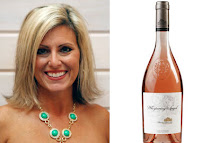Sparkling Recommendations:
A Rosé Champagne or Sparkling wine brings a lovely pink color to the party as well as more pronounced berry and fruit flavors. Many Rosés can stand up nicely to "bigger" dishes including lobster, swordfish or even roasted duck. I really enjoy pairing a Rosé sparkler with this delicious Seafood Stew. Chock full of shrimp, mussels and fish in a tomato-based broth, this dish is a fabulous match for all the deliciousness a Rosé sparkler has to offer.
Sparkling Recommendations:
For dessert, pair a sparkler with a little sweetness to it, like a Demi-Sec or Sec, with a Pear Clafouti for a guaranteed crowd pleaser! This lightly sweet, delicious dessert lights up when complemented by a sparkling wine with similar characteristics. Please don't shy away from the sweetness of the bubbly! Even with a bit of sugar, sparkling wine still retains its hallmark acidity that balances everything nicely. I am a big fan of offering a dessert wine to your guests in general, it's such a nice touch and such an underappreciated segment of the wine world. Your friends will surely think you're a Glamorous Gourmet when you utter, "Demi-Sec, Anyone?"
Sparkling Recommendations:
I really hope you enjoy these pairings! These are some of my favorites and I'm very happy to share them with you. I hope you've enjoyed Champagne Week on The Glamorous Gourmet and I'd like to wish you all a wonderful and delicious New Year. Looking forward to lots more food and wine fun in 2012!
Cheers,





















